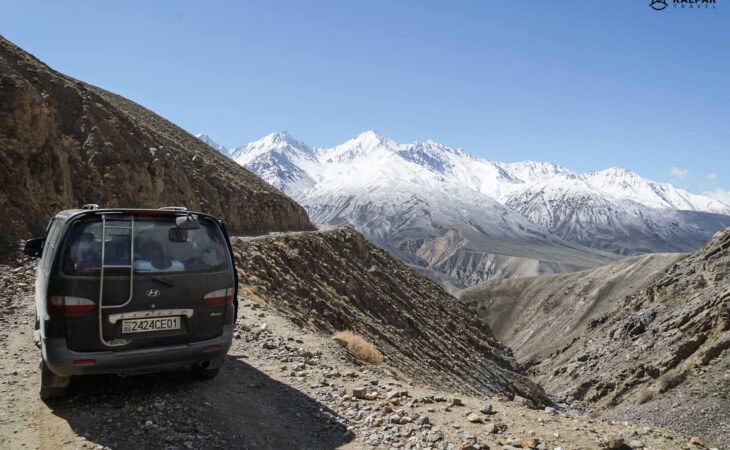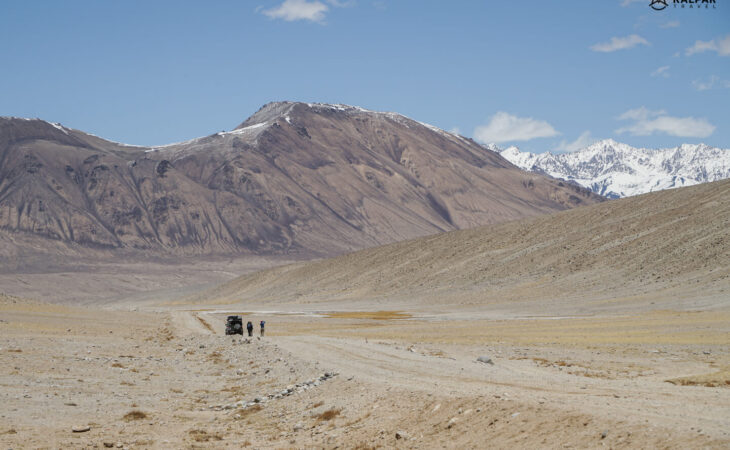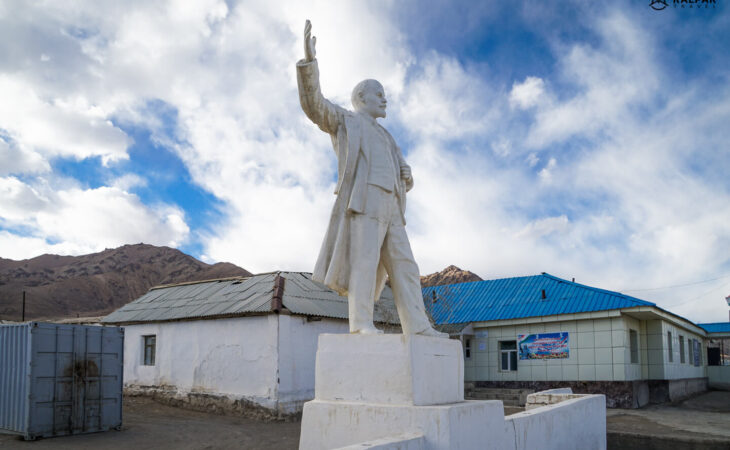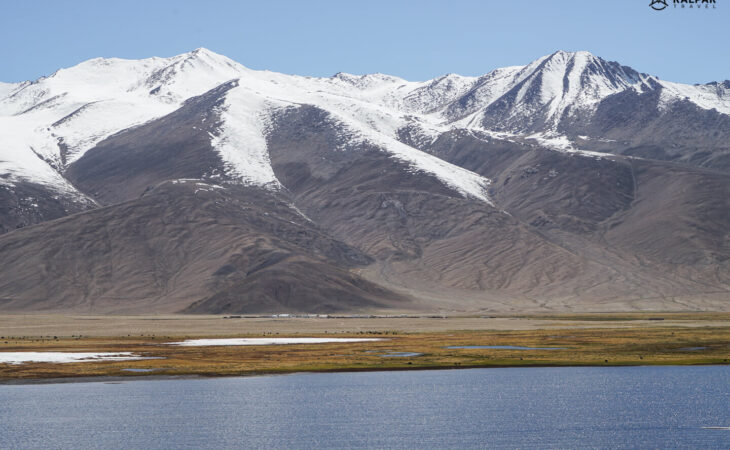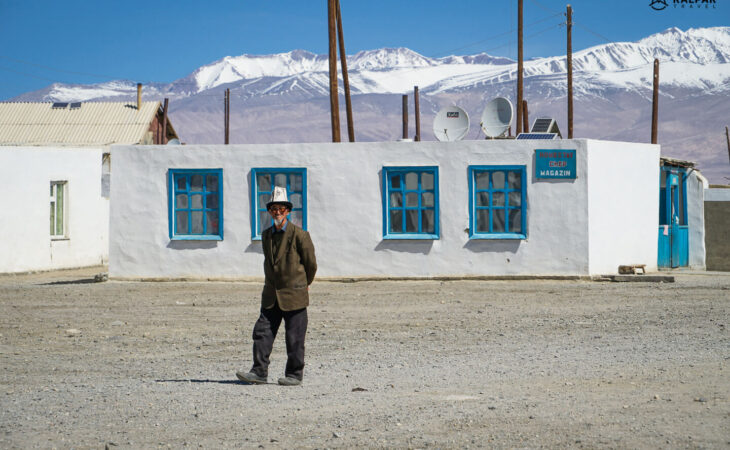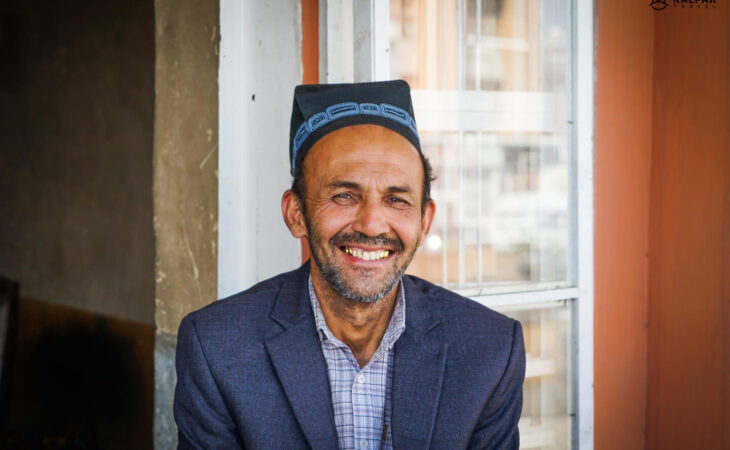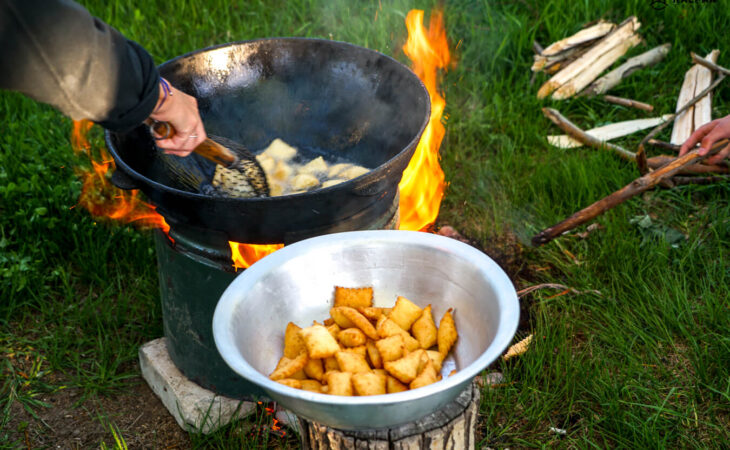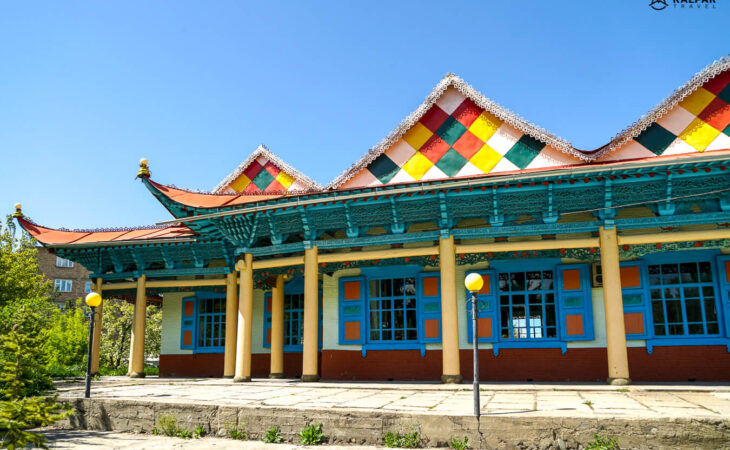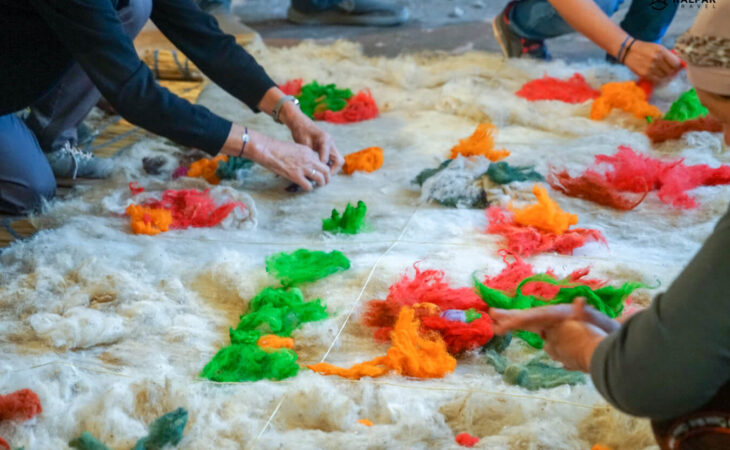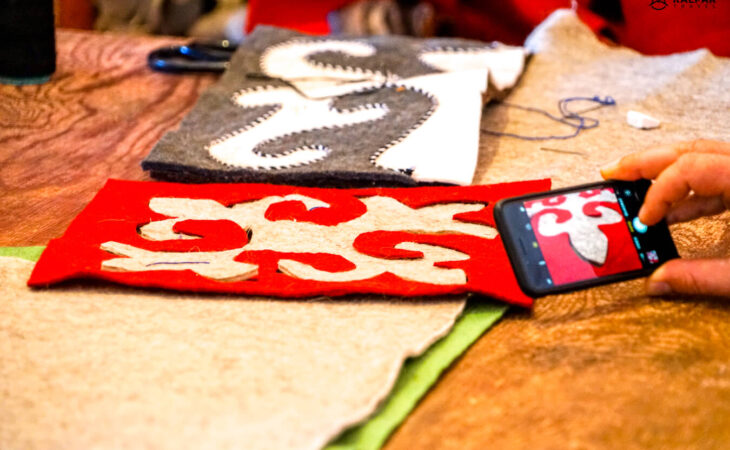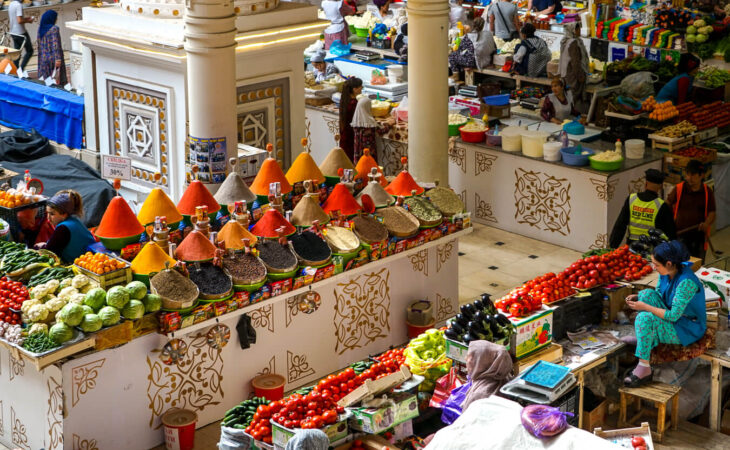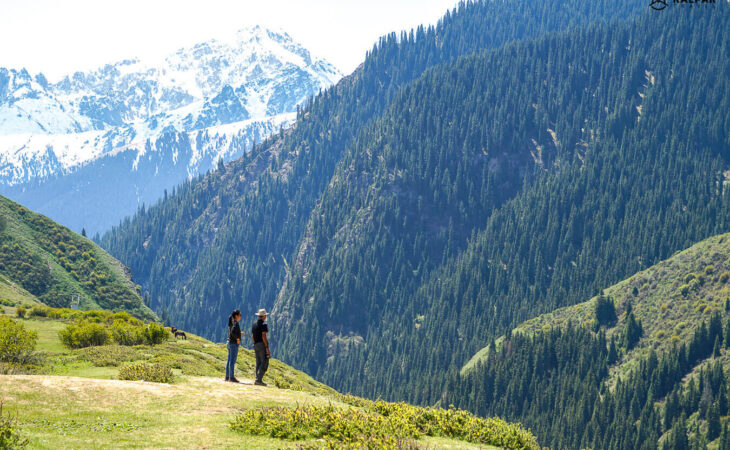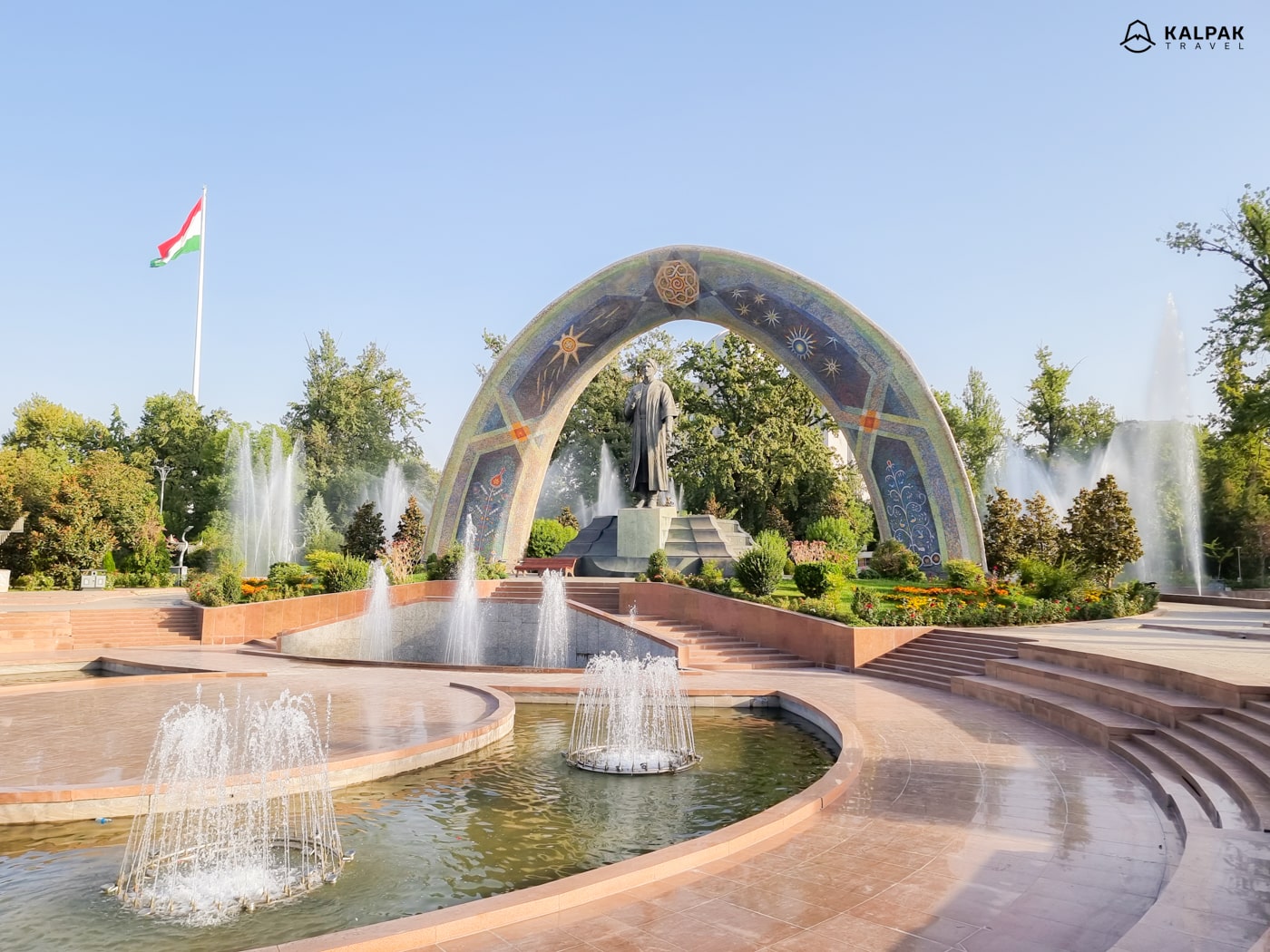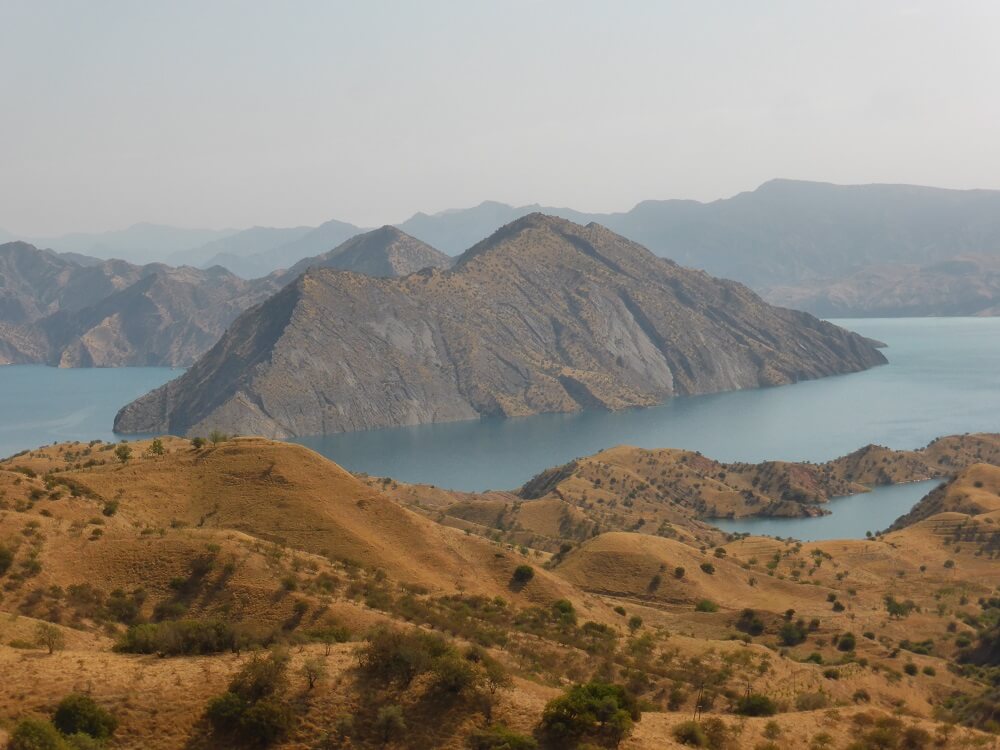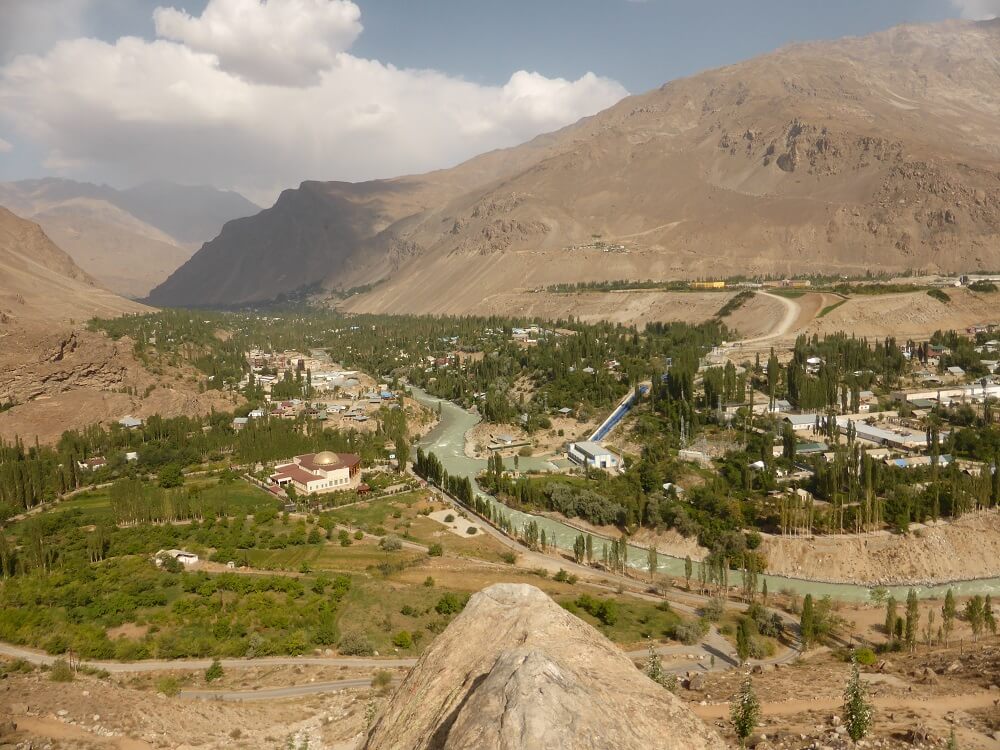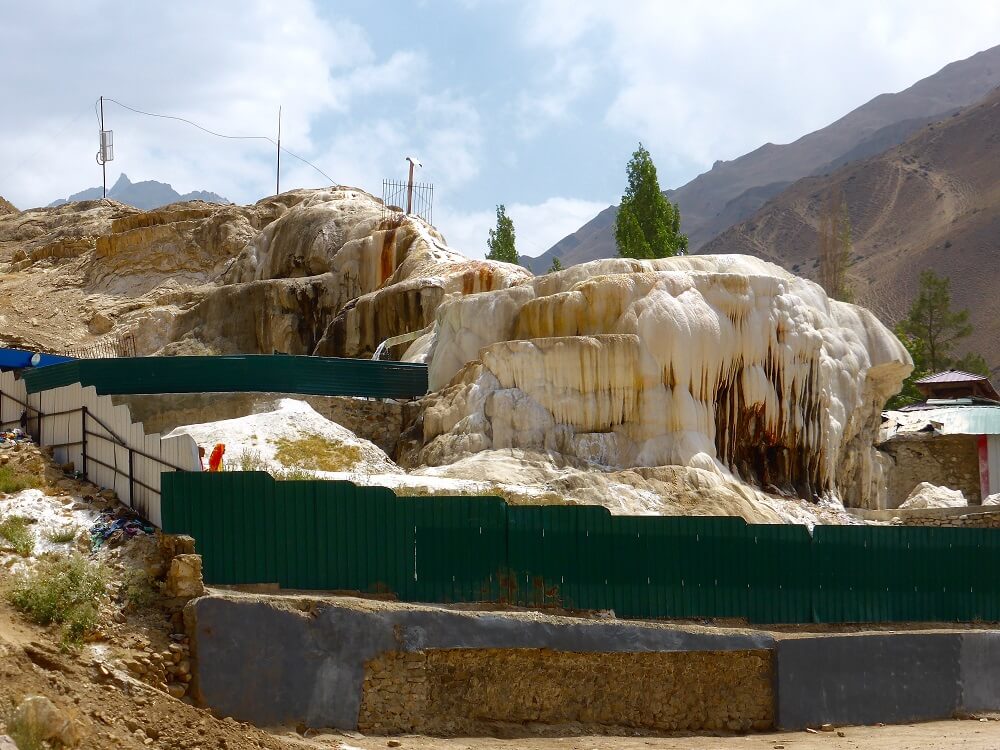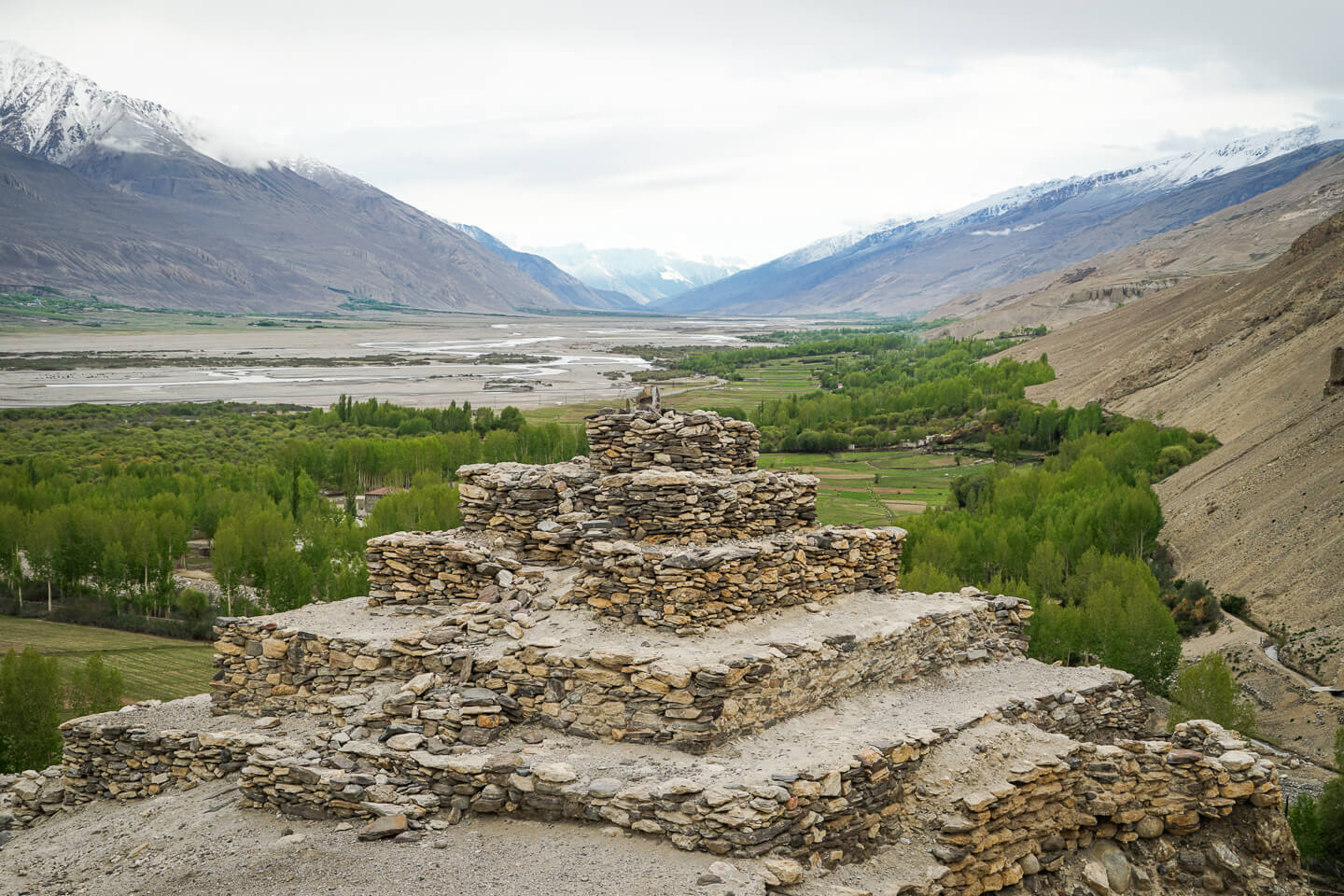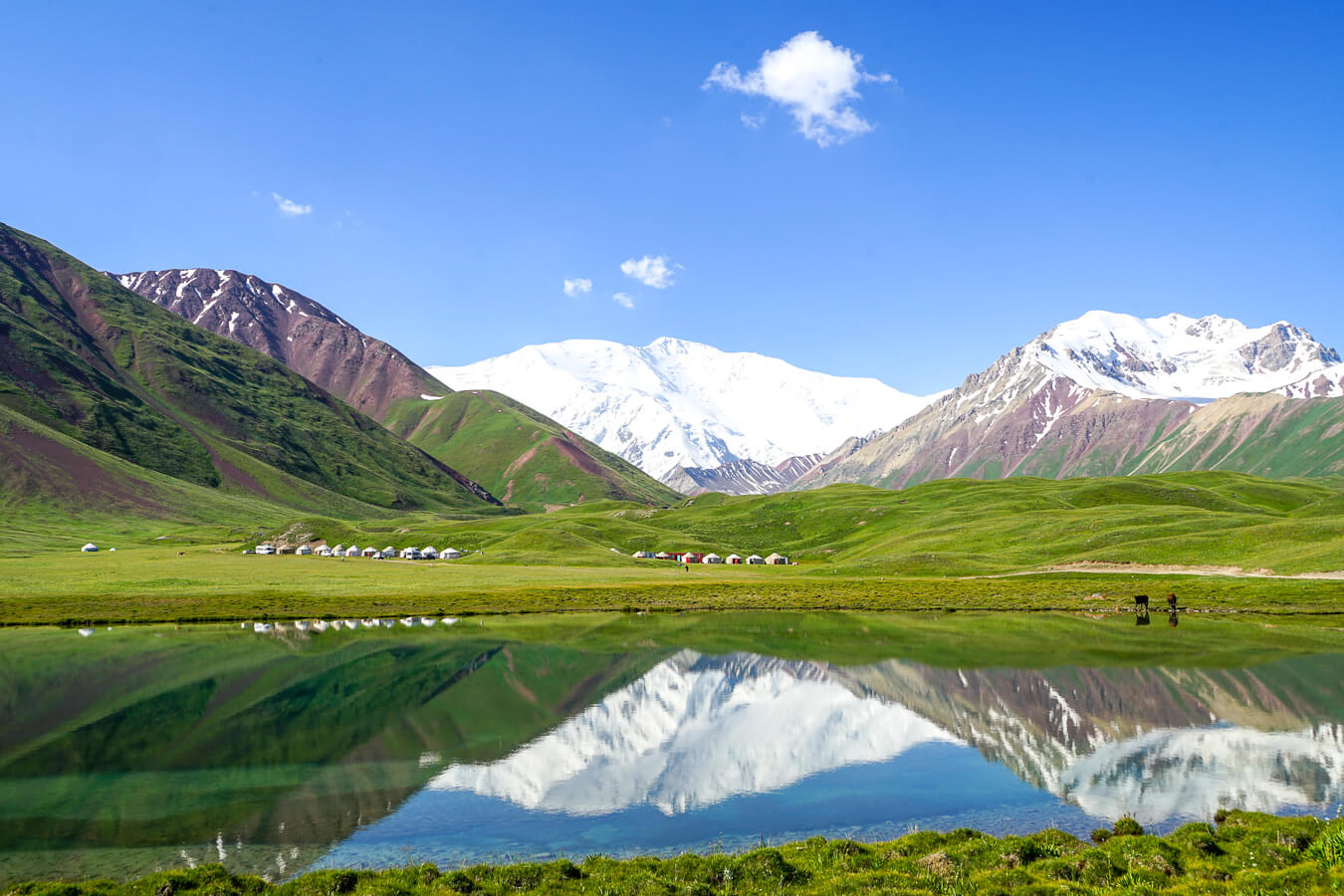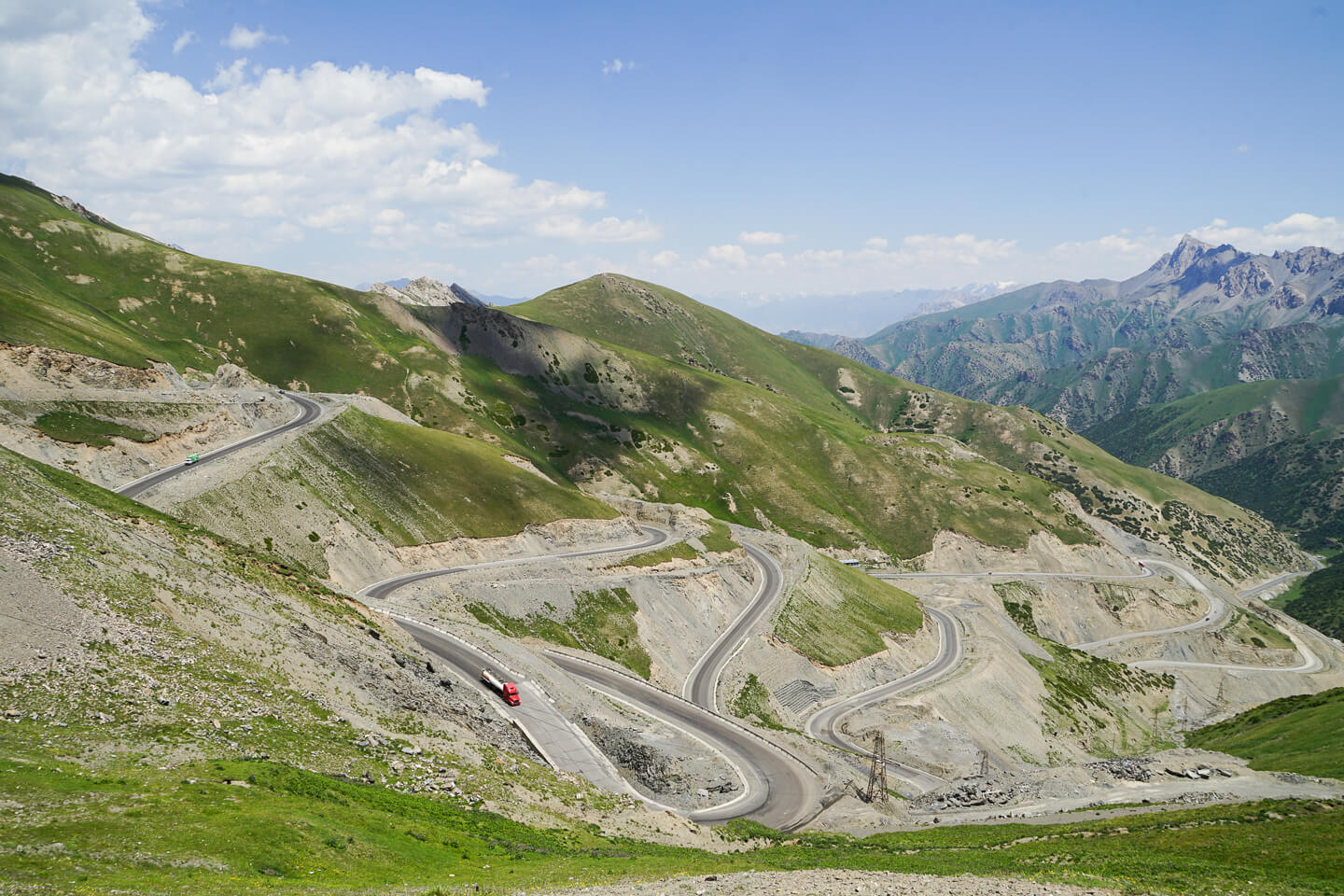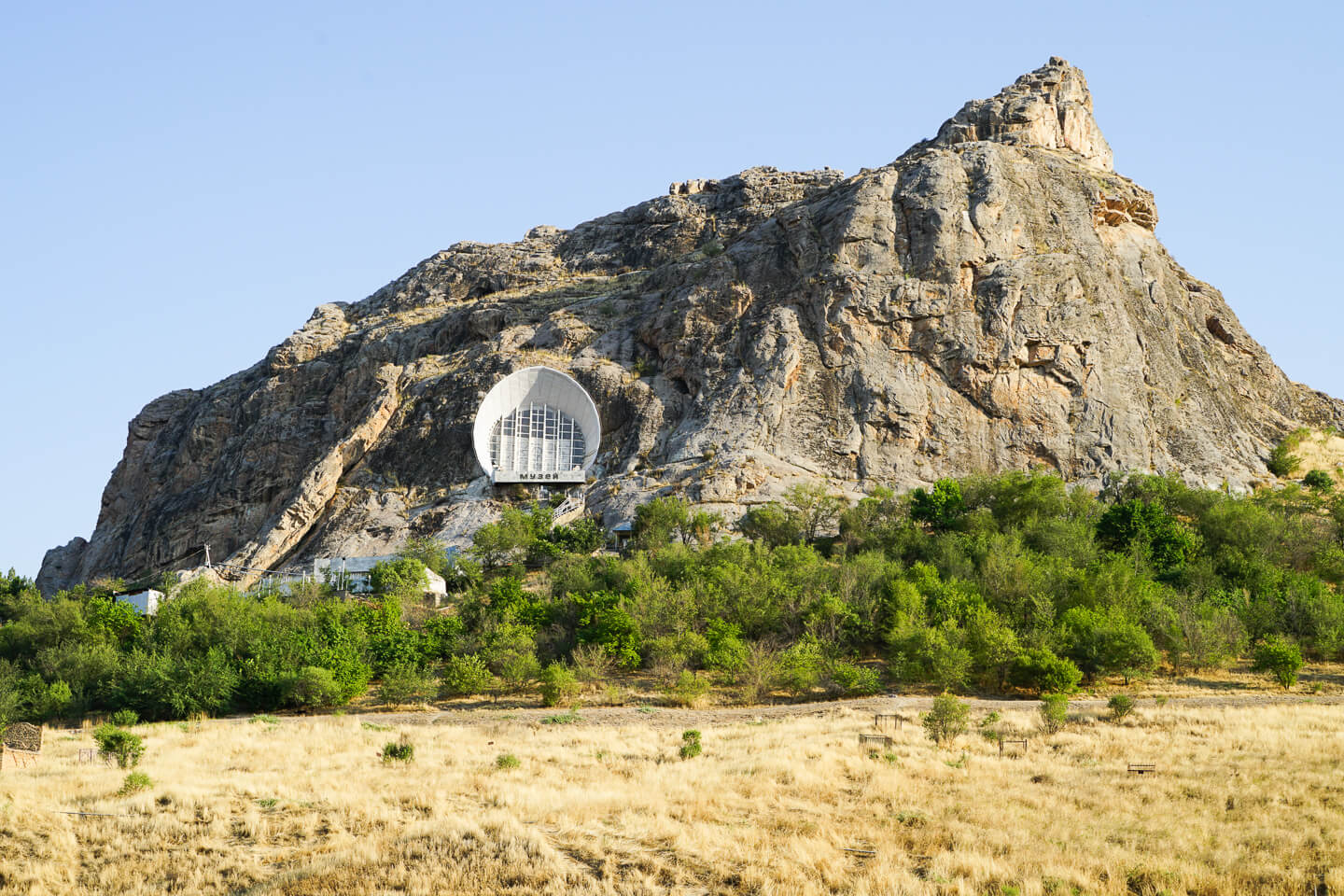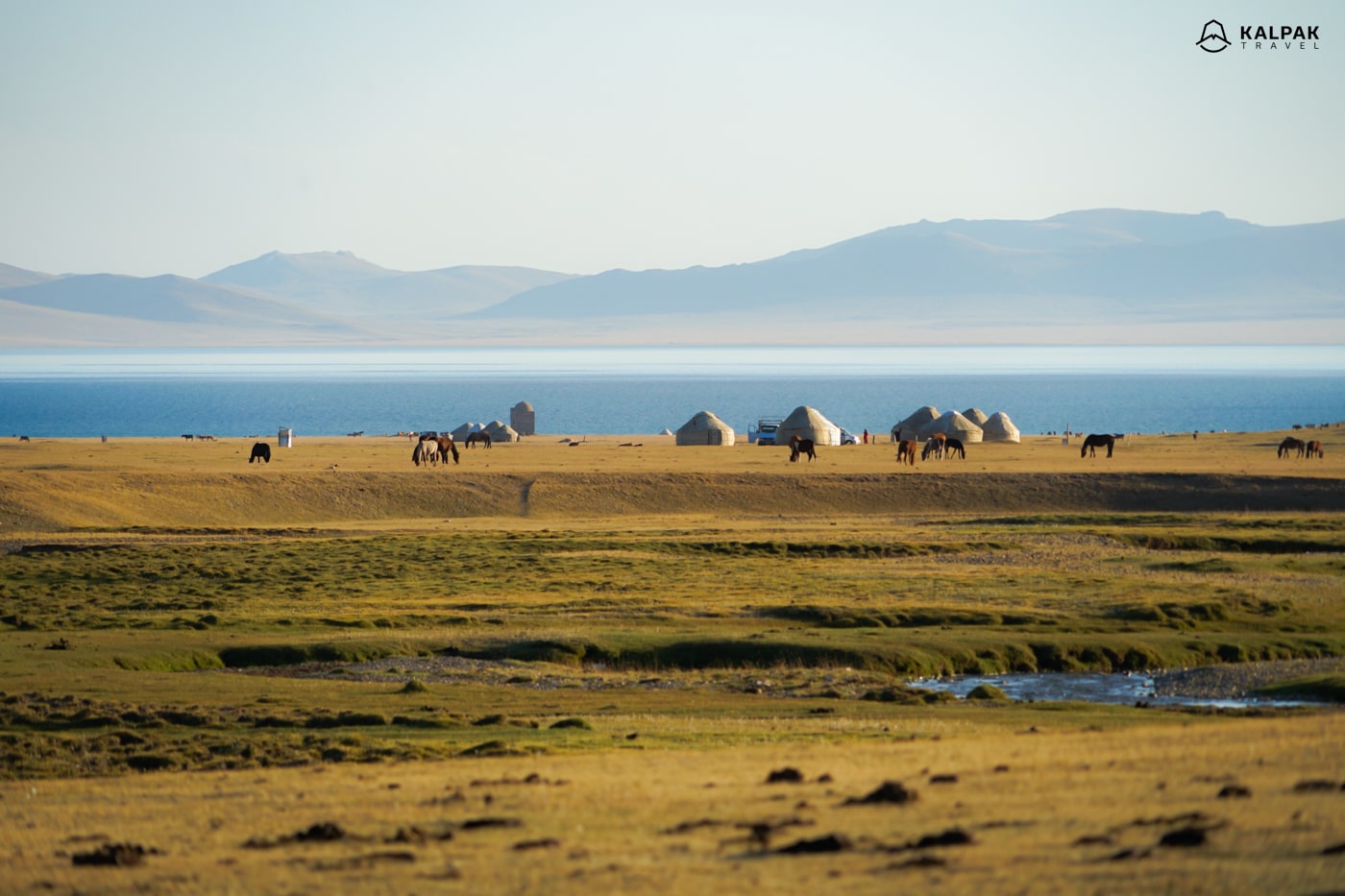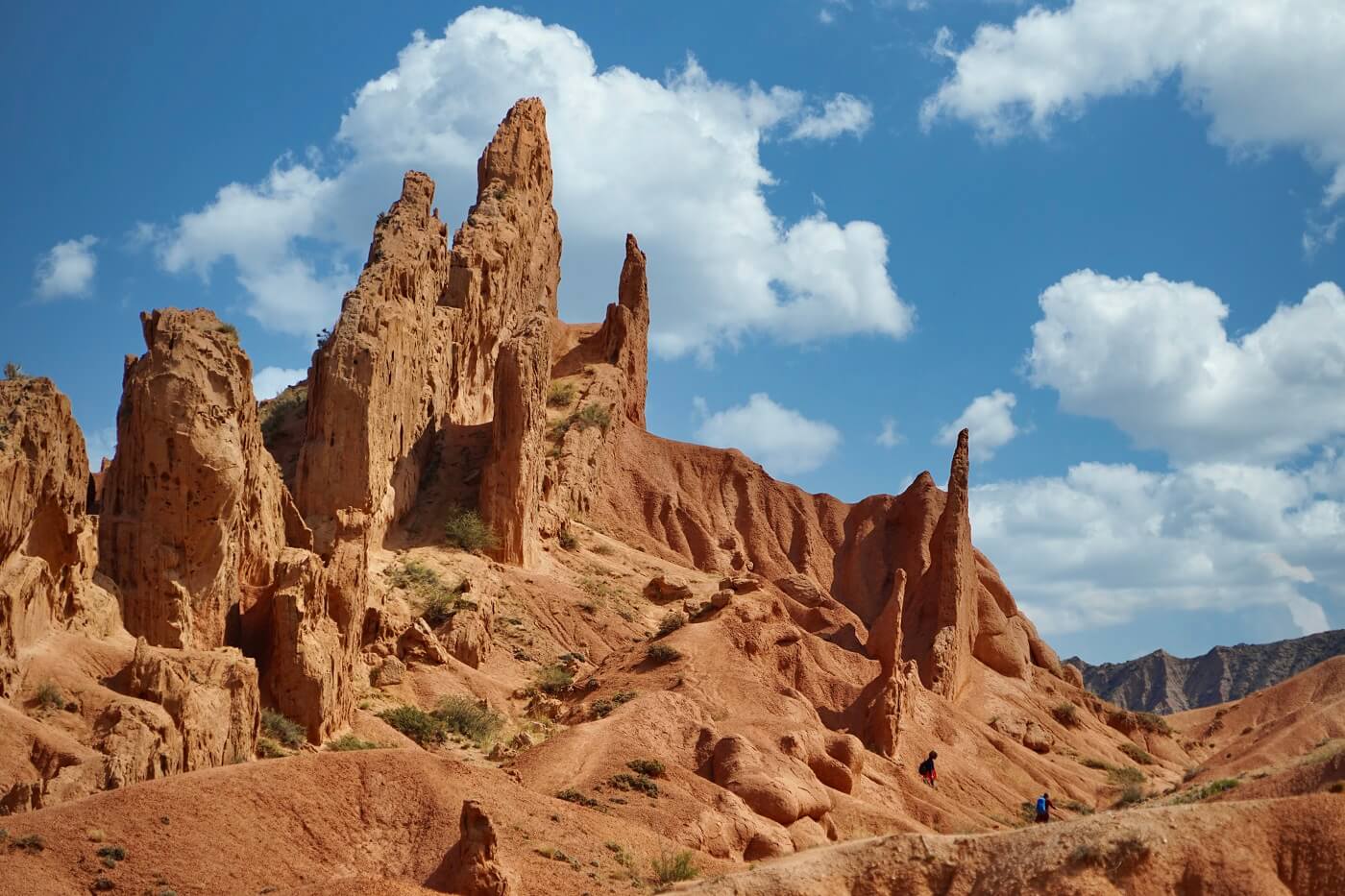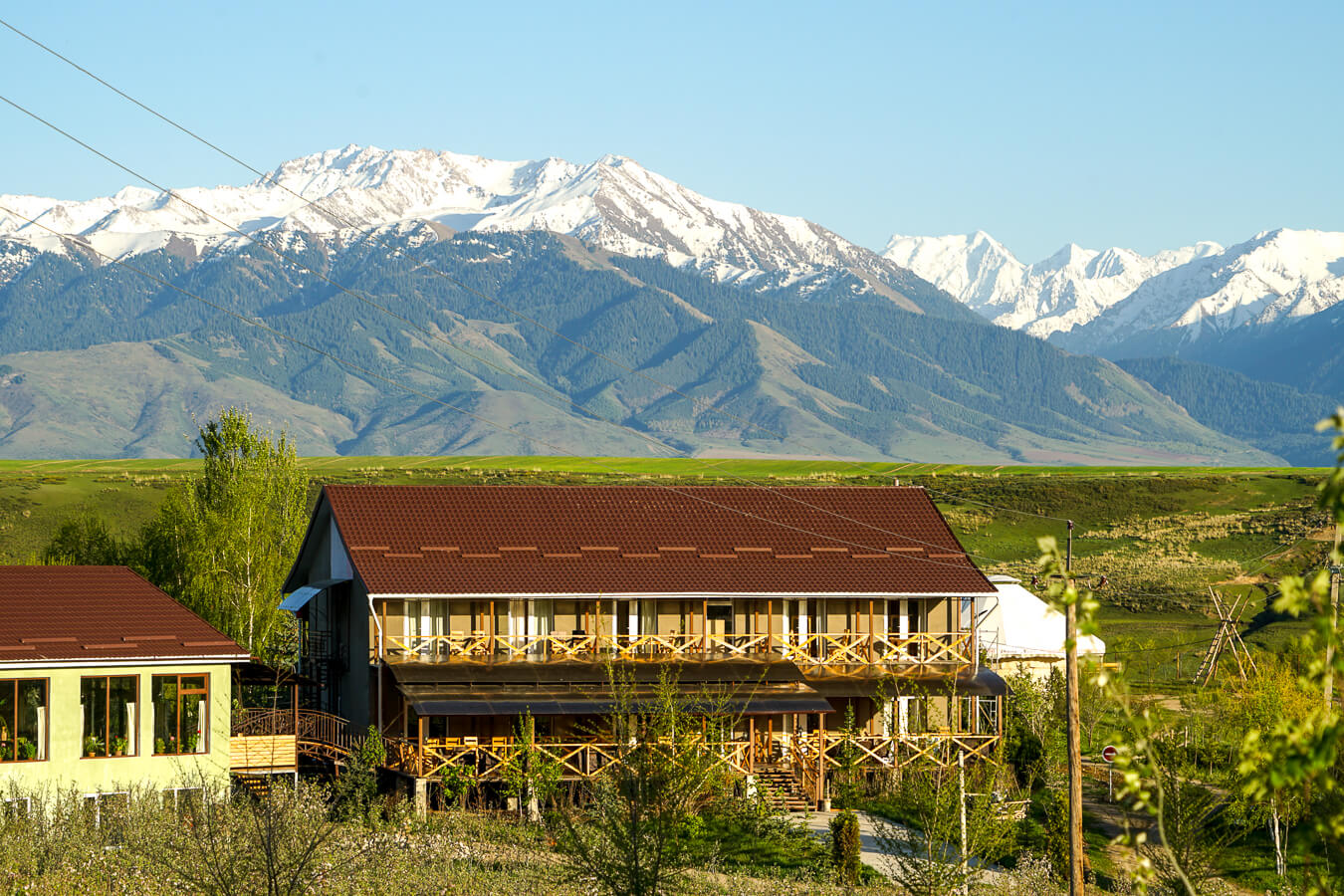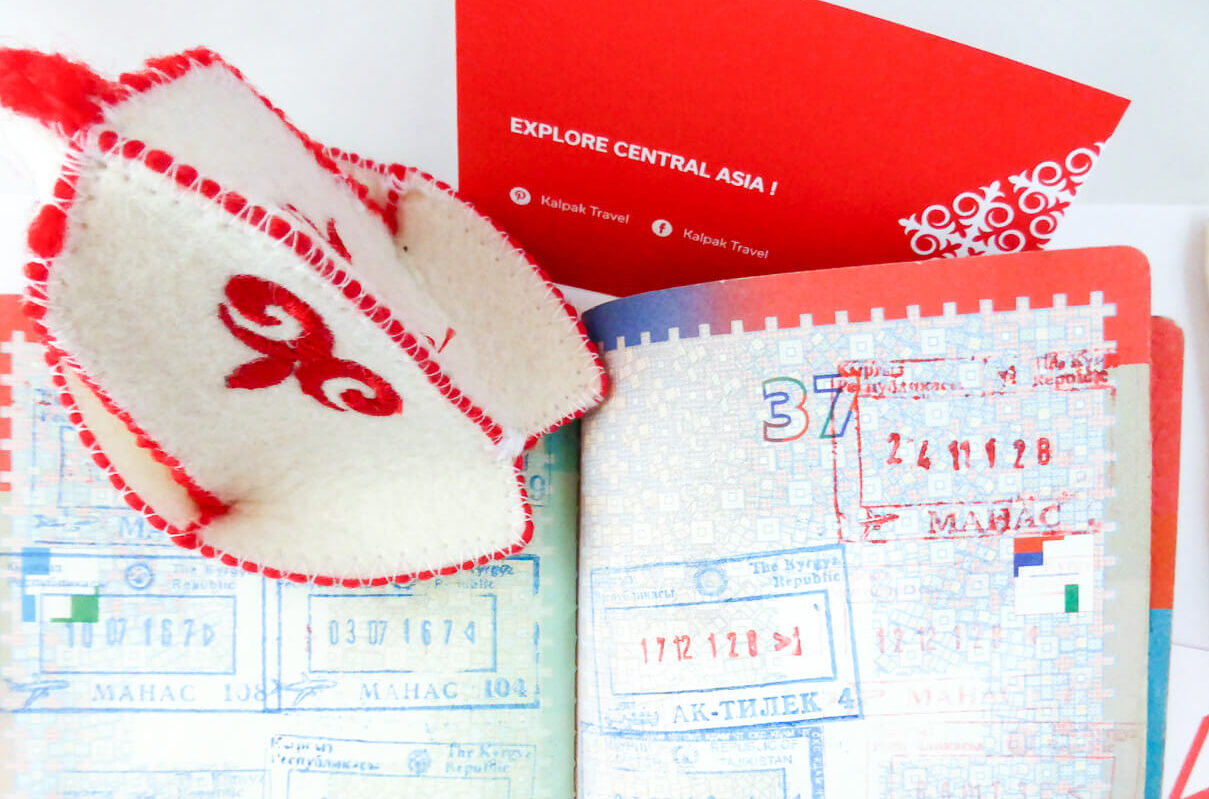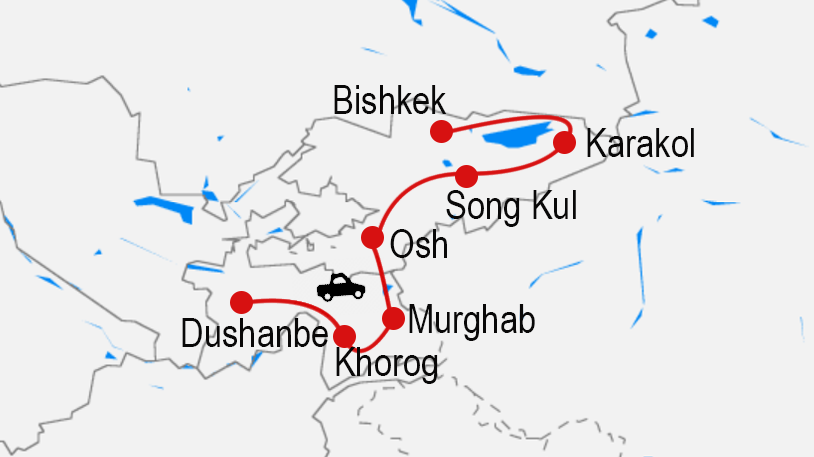Before breakfast, you will see how boorsok (small, deep-fried breads which are a local delicacy) are made, and then eat your fill of this popular Kyrgyz breakfast food. In the village we will visit the women’s cooperative specializing in hand-making traditional Kyrgyz carpets from felt, which are called shirdak.
We will then drive to Issyk Kul, “the pearl of Kyrgyzstan” and the second-largest mountain lake in the world. At an altitude of 1,600 meters, it is warm enough in summer for swimming and a popular beach destination for the Kyrgyz and Kazakh people. We will have several interesting stops along the way.
Our first stop is in the village of Kyzyl Tuu, where we will meet a yurt maker and learn more about this traditional nomadic dwelling. Many people in this village are involved in yurt making business. Near Bokonbayevo, we will meet an eagle hunter, who will show us his eagle and give a short demonstration for us. At Skazka (Fairytale) Canyon, which derives its name from its bizarre landscape made of fabulous rock formations, we will walk for around one hour. From here, it is then just half an hour to reach our destination, a yurt camp near the shore of Issyk Kul. We will arrive well before dinner, so you can go swimming or have some rest. In the evening we will have a cooking class to prepare a local meal of manty (dumplings).
Overnight in a yurt camp (two people per yurt, one toilet, and shower per yurt)
Meals: Breakfast, Lunch, Dinner




